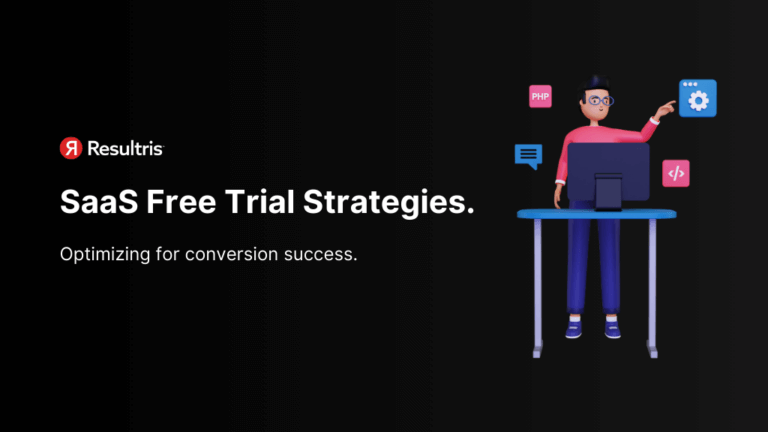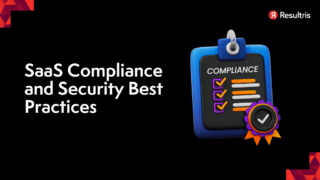

Written by: Tim Eisenhauer
Last updated:

In the ever-evolving world of SaaS, it’s crucial to have a sound strategy in place for your free trial offerings. As we navigate this digital terrain, let us share some insights on how to effectively execute your SaaS free trial strategies. From our perspective as a SaaS marketing agency, we’ve seen firsthand how the right approach can lead to an uptick in conversions and customer retention.
When you’re operating in the SaaS industry, one thing is clear – offering a compelling free trial is no longer just an option, but rather a necessity. We understand that getting potential users to take that first step towards trying out your service can be challenging. It’s here where a well-crafted free trial strategy comes into play.
Whether you’re a budding startup or an established enterprise, refining your free trial strategies should always be part of your agenda. Being familiar with different models and knowing which one aligns best with your business objectives can give you the upper hand. In our experience as SaaS marketing consultants, we’ve observed how adopting flexible and user-centric approaches often result in increased engagement and higher sign-up rates.
We’ve all heard it before: “Try before you buy”. It’s a concept that’s not just relegated to the supermarket or the car dealership. In fact, it has become an integral part of the software as a service (SaaS) industry. Offering free trials is one of the most potent strategies employed by many successful SaaS companies today. But why are free trials so important for SaaS? Let’s delve into this further.
First and foremost, free trials serve as risk reducers for potential customers. They allow prospects to see if your product is indeed a good fit for their needs without any financial commitment. This can significantly speed up the decision-making process, turning prospects into paying customers much quicker than traditional sales methods.
Here’s an interesting tidbit – did you know that according to Totango, 70% of SaaS companies offer a free trial? That’s quite telling about its importance in this particular sector!
| Organization | Percentage Offering Free Trial |
|---|---|
| Totango | 70% |
Giving out a taste of your service doesn’t just accelerate conversion rates; it also provides invaluable insights about your product-market fit and user experience (UX). These insights can be used by both your team and any external SaaS marketing consultant or agency you’re working with to refine and improve upon what you’re offering.
Moreover, if users find value during their trial period, they’ll likely spread positive word-of-mouth about your software – which is arguably one of the most effective forms of marketing out there!
Lastly, while offering free trials does involve some initial investment from your side – be it in terms of resources or time spent on supporting new users – we believe that these investments pay off in spades long-term through higher customer acquisition and retention rates.
In short:
So there you have it. The offering of free trials isn’t just a trend in the SaaS industry; it’s an essential strategy that benefits both the company and its potential customers.
When it comes to designing an effective free trial strategy for your SaaS business, there are a few key factors we need to consider. From understanding our target audience to setting clear goals and metrics, let’s dive into the details.
First things first – you’ve got to understand your target audience. Who are they? What are their pain points? How can your product help them solve these issues? As a SaaS marketing consultant, we’ve seen countless businesses launch successful free trial strategies simply because they took the time to get in-depth knowledge about their users.
For instance, if we’re targeting small businesses looking for project management tools, we’ll want to ensure our free trial focuses on features that address their specific needs like task tracking or team communication. Conduct surveys, interviews or utilize analytics data; every bit of information helps us tailor not just our product but also our marketing approach.
Next up is setting clear goals and metrics – this is where many businesses falter in their free trial strategy. Without defined objectives and ways to measure success, how can you gauge whether your strategy is working?
As a seasoned SaaS marketing agency, we cannot stress enough on the importance of having SMART (Specific, Measurable, Achievable, Relevant and Time-bound) goals for your free trials. For example:
Setting such precise targets allows us not only track progress but also make necessary adjustments along the way.
In conclusion: Understand who you’re catering to and set clear-cut goals with measurable outcomes – therein lies the secret behind crafting an effective SaaS free trial strategy!
We’ve all seen it, haven’t we? A SaaS company promoting their product with a “free trial for 30 days” offer. It’s an enticing proposition that can significantly boost user acquisition. But why does this strategy work so well?
Let’s dissect it. When your potential customers are given limited time access to your software, they’re more likely to try it out immediately. They’ll want to maximize the benefit from their free trial period, which often leads to increased usage and engagement.
What’s exciting is this: According to a study by a renowned B2B SaaS marketing consultant, companies offering limited time access see up to a 60% increase in conversion rates. That’s quite an impressive figure!
But remember, it’s not just about setting up the time limit – you also have to ensure that those customers find value within that timeframe. Make sure your product delivers on its promises during the trial period, and you’ll be surprised at how many of these users become paying customers.
Now let’s talk about personalized onboarding – another crucial element in implementing free trial incentives effectively.
We live in an age where personalization is no longer just desirable; it’s expected! And according to many SaaS marketing agencies, personalized onboarding can make or break your customer retention efforts.
This is where customizing user experiences comes into play. Tailoring tutorials or walkthroughs based on user preferences will help them understand how your software can meet their specific needs better. Remember, if users feel valued right from the get-go, they’re much more likely to stick around.
Here are some ways we’ve observed successful personalization:
Incorporating these strategies could mean the difference between a user that churns and a user that converts.
Lastly, let’s discuss the power of leveraging in-app demos. In essence, this strategy involves showcasing key features of your software directly within the application itself.
We’ve seen firsthand how effective this can be. It’s like giving users a guided tour of what they can achieve with your product – without ever leaving the app.
In fact, one SaaS marketing consultant found that companies incorporating in-app demos saw an increase in conversion rates by up to 25%. That’s not something you’d want to miss out on!
However, it’s crucial to strike a balance here. Overloading users with too much information might overwhelm them and deter them from exploring further. So keep it simple, focused and relevant.
In conclusion (and yes, we’re breaking our own rule here), implementing free trial incentives is no walk in the park – but when done right, these strategies can yield significant results for your SaaS business. So go ahead and give them a shot!
We’re delving into the meat of our guide now, hitting an area where many SaaS businesses stumble: data analysis. By closely observing your free trial data, you can gain crucial insights that’ll help shape your marketing strategies and trial conversion rates.
First thing’s first, we need to determine what metrics are essential for us. Some key performance indicators (KPIs) that a SaaS marketing consultant would suggest include:
Now let’s take a closer look at these KPIs. The number of sign-ups is straightforward – it’s simply how many people have registered for your free trial. However, don’t be swayed by large numbers here; what truly matters is how many of those sign-ups convert into paying customers.
The conversion rate can be calculated by dividing the number of users who moved on to become paying customers by the total number of free trial users. This metric is pivotal as it demonstrates how effective our product or service is at convincing users to stay with us long-term.
Next up is user engagement during the free trial period. It’s not enough for users just to sign up; they need to actively use and explore the features available in order for them to consider becoming paid subscribers once their trial ends.
Finally, we have churn rate post-trial which shows how many subscribers leave after their first billing cycle. A high churn rate might indicate dissatisfaction with the product or perhaps that expectations were not met during the free trial phase.
Working hand in hand with a skilled SaaS marketing agency can greatly assist in understanding these metrics and implementing necessary changes based on this data analysis. They will help us put all this knowledge into action, directly influencing our overall business strategy and improving both customer acquisition and retention rates.
We’ve covered a lot of ground in our exploration of SaaS free trial strategies. As experienced SaaS marketing consultants, we understand the complex dynamics that influence customer behavior during free trials. It’s clear that successful strategies are built on a deep understanding of your audience and product.
One key takeaway is that there’s no one-size-fits-all approach to free trial design. Some companies find success with short, high-intensity trials while others thrive with longer, more relaxed periods. We’ve seen firsthand how these different approaches can yield varying results for businesses in the SaaS industry.
Here’s a quick recap of some crucial points:
| Key Point | Notes |
|---|---|
| Understanding Customer Needs | Tailor your service to meet individual user requirements |
| Trial Length | Short or long? Depends on product complexity and user learning curve |
| Value Communication | Consistent messaging to highlight product benefits |
| Seamless Transition | Minimize friction when moving from free trial to paid plan |
The role of a robust follow-up strategy should not be underestimated either. Whether it’s through personalized emails or feature nudges within the platform, timely communication can nudge users toward conversion.
Working with a knowledgeable SaaS marketing agency like ours can help you craft an effective free trial strategy tailored specifically for your business. This will ensure that you’re maximizing every opportunity to convert those testers into loyal paying customers.
Remember, while we’ve provided guidance based on our experiences and observations, it’s essential always to test and adapt according to what works best for your unique situation. After all, flexibility is at the heart of any successful SaaS business model!
Ultimately, when it comes down to creating winning SaaS Free Trial Strategies – knowledge is power! So, keep learning, testing and refining your strategies. And if you need help along the way, we’re here to lend our expertise.




